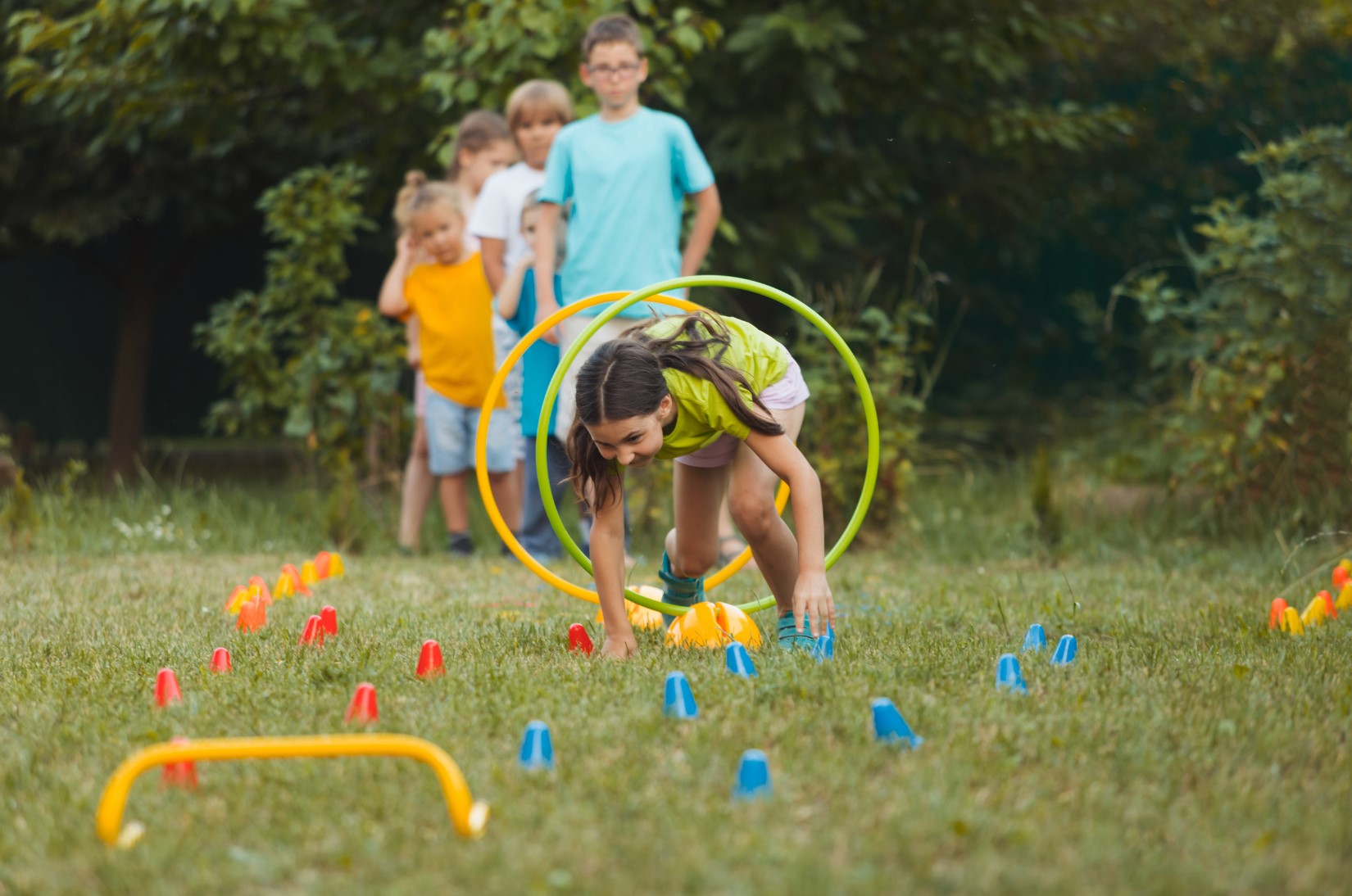
Human Harms
Adults, Children, Elderly
The chemicals that are repeatedly sprayed on our lawns have a long list of potential harms ranging from short term effects like dizziness and nausea all the way to various forms of cancer. Please fully investigate the chemicals being applied to your lawns, and weigh the potential harms that come from chronic exposure, not only from what is sprayed on your lawn, but in the entire neighborhood.
What are the Risks?
What health problems are these chemicals linked to?

See here for the staggering list of harms that chronic exposure to lawn chemicals may cause: Beyond Pesticides: Health effects of 40 common lawn chemicals. The list is quite unsettling, including cancers, Parkinson's disease, and many others. According to the UW School of Medicine and Public Health: "Most conventional lawn herbicides (pesticides that kill weeds) are toxic to children. As previously stated, they increase the risk of a number of childhood diseases. Some children will be affected, and others will not." Most of us are not comfortable taking this kind of risk with our children. According to Consumer Reports: "What’s more, several common lawn pesticides are suspected endocrine disrupters, meaning they might interfere with the body’s hormones. This is thought to occur at very low doses during certain vulnerable phases of life, such as the prenatal period and early childhood. Endocrine disruption may contribute to a range of issues, including diabetes and reproductive and developmental problems." The questions we need to ask is, what price are we willing to pay to have our lawns meet a certain aesthetic standard? And, can a lawn saturated with harmful chemicals linked to serious disease truly be considered beautiful? Also Clean Water Action clarifies governmental regulations: "pesticides are not harmless and safe (they have to be registered with the U.S. Environmental Protection Agency (EPA) because they are dangerous), and using them has consequences on many levels. The EPA and NJ Department of Environmental Protection (NJDEP) do not allow claims of safety to be made for pesticides, which by nature are designed to kill living organisms."
How long do these chemicals stick around?

The signs say to wait "48 hours" but homeowners rarely follow it. The chemicals are still there, and as a result of the spraying they may be tracked into your homes, on shoes, pet's paws, and have been found in indoor dust of homes whose lawns have been sprayed.The persistence of pesticides in ground water for years also contributes to concerns for the persistance of their effects.
Reader's Digest in an article entitled The Dark Side of the Perfectly Manicured American Lawn: Is It Giving You Cancer? shows how these chemicals persist in our indoor environments: "Like flame retardants, this compound also tends to accumulate inside people’s homes even days after the lawn has been sprayed. One study found 2,4-D in the indoor dust of 63 percent of sampled homes; another showed that levels of the chemical in indoor air and on indoor surfaces increased after lawn applications. After 2,4-D was sprayed, exposure levels for children were ten times higher than before the lawns were treated—an indication of how easily the chemical is tracked inside on the little feet of dogs, cats, and kids."
In addition, through ground water the USGS Governmental Agency detected DDT in fish 20 years after the spraying stopped.
But the EPA approved it.

People often assume that if the EPA has allowed a chemical to be on the market, it must be safe. This is an erroneous assumption. The EPA itself has stated that lawn chemicals account for the majority of wildlife poisonings, and all pesticides come with a Safety Data Sheet that lists many potential harms to humans and the environment, as well as stringent safety measures that must be taken by those who use the chemicals. Yet New York State does not agree those safety measures are adequate. Another agency of the US government questions the reliability of EPA safety conclusions. Also, chemicals that the EPA has once approved have either been later banned, are banned in other local governments and countries, or are currently embroiled in lawsuits and may very well be banned in the future.
What dangers are there for landscape workers or homeowners who spray their own yards?
A homeowner who applies pesticides to their own lawn bears a certain level of risk while doing the application. This can include all the health problems above, as well as short term issues like headaches, nausea, and skin irritation. The recommended safety precautions are very cumbersome and rarely followed perfectly. Many people just go out there and spray the chemicals with very little protective gear, except maybe gloves.
Consider the landscape worker. He is spraying lawns all day long, multiple days per season. His exposure is exponentially higher, and that increases his risk for negative health outcomes as well. His family is also at risk as he tracks the chemicals into the home, and to all who touch his clothing. Each chemical has its own precautions and recommendations for protective clothing, but it is obvious that if someone is wearing cotton type clothing, the chemical gets on the clothing, potentially into the skin, and also on whoever the workers comes in contact with (including dispersing through the laundry).
Have you ever actually seen landscape workers in full PPE? In fact, we observe them wearing a plastic jug full of chemical as a "backpack" directly on their bodies, and applying the chemicals to entire lawns while wearing cotton-type clothing (as opposed to something non-absorbent or non-porous). Their skin is often unprotected, and they have no way to avoid inhaling these products. This is likely done in the interest of time and cost, but at the expense of the worker's health. The clothing, which is now saturated with chemicals, is brought home and technically should be treated as "contaminated" and washed separately, but we doubt everyone takes these precautions.
What about having my yard sprayed for mosquitos?
Mosquito killing products are often touted as "natural" because the pesticide is derived from chrysanthemums, except that the plant-derived pyrethrins still pose dangers as they are potent poisons. Simply being from a plant does not make something non toxic as there are many poisonous plants, especially when the active ingredient is extracted and concentrated. The potential harms from lawn pesticides are present with mosquito spraying, including the drift that affects unsuspecting neighbors and the harms to humans, pets, and wildlife.
What about 'weed and feed?'
Another source of harmful chemicals is in the chemical fertilizers sometimes knows as "weed and feed." This is a combination of chemical fertilizer and potent weed killer. Sometimes landscapers will tell you they are "just applying fertilizer" (which sounds harmless) but the fertilizer contains weed killer as well and comes with the same risks. There are natural fertilizers, including letting clovers grow on your lawn (which put nitrogen in the soil naturally).
If it is so harmful, how come it is so common?
A key failure leading to the successful Roundup lawsuits was the absence of notice about the risks. This failure is broad based. Now the routine spraying of entire lawns is a relatively recently phenomenon in American suburban culture. It has to do with the proliferation of suburban communities, smaller yards, and outsourcing lawn care to landscape professionals (whose workers bear the worst health burden). Chemical companies see a market, and fill it. Going back a few decades, weed control was done manually, or with spot treatments. Aesthetic standards of a uniformly green lawn weren't so widely held. Many of us have childhood memories of blowing dandelions or clover filled lawns with bees. Fresh cut grass smelled like fresh cut grass, not acrid chemicals. In the past thirty or so years, we have seen dramatic rises in all sorts of illnesses including autism, cancers, asthma, as well as environmental harms such as declines of songbirds, bees, and other wildlife. What part of this comes from the nearly 100 million pounds of harmful chemicals applied to lawns? Time will tell, and these issues are complex, but we have enough information to conclude that the aesthetic benefit isn't worth the potential risks.

